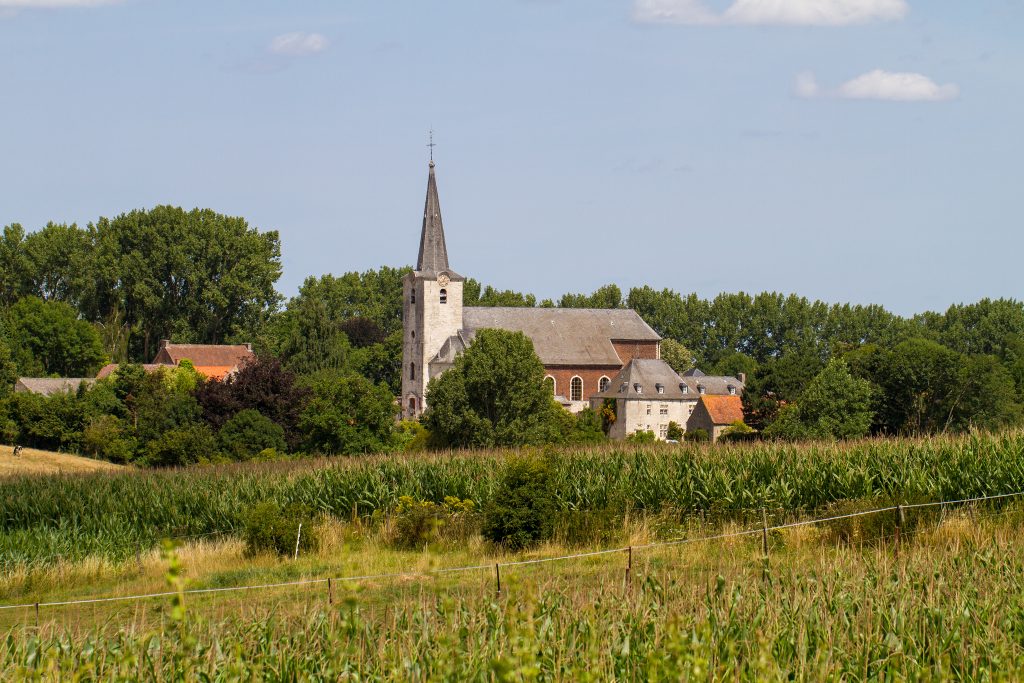Date and Time of Visit: July 21, 2017, approximately 12:00 a.m.
Finally, the last and most beautiful village of Wallonia. Initially, I didn’t plan to go to the Liege side of eastern Belgium, so I didn’t intend to conquer it completely in one trip, but the Walloon region was smaller than I thought and I had more time to spare, so I ended up visiting the most beautiful villages in the Liege region.
The village I’m going to introduce here is located less than an hour southeast of Brussels. It was indeed a heartwarming countryside, but compared to the other villages I’ve visited, it felt more urban than the others because it was located in a flat area and there were no forests as I’ve often seen in the past.
It was just around noon when we arrived at the village. It was a beautiful day and we went sightseeing in the hot sunshine. Although the village is said to be located on the flatland, the actual center of the village was located on a rather small hill. Parking space could be found right beside the old town church by chance, but I didn’t see any space for general visitors, so it might be a place where you have trouble finding a parking space. I parked my car as shown in the photo below. My car is the one just below the tree in the left foreground.
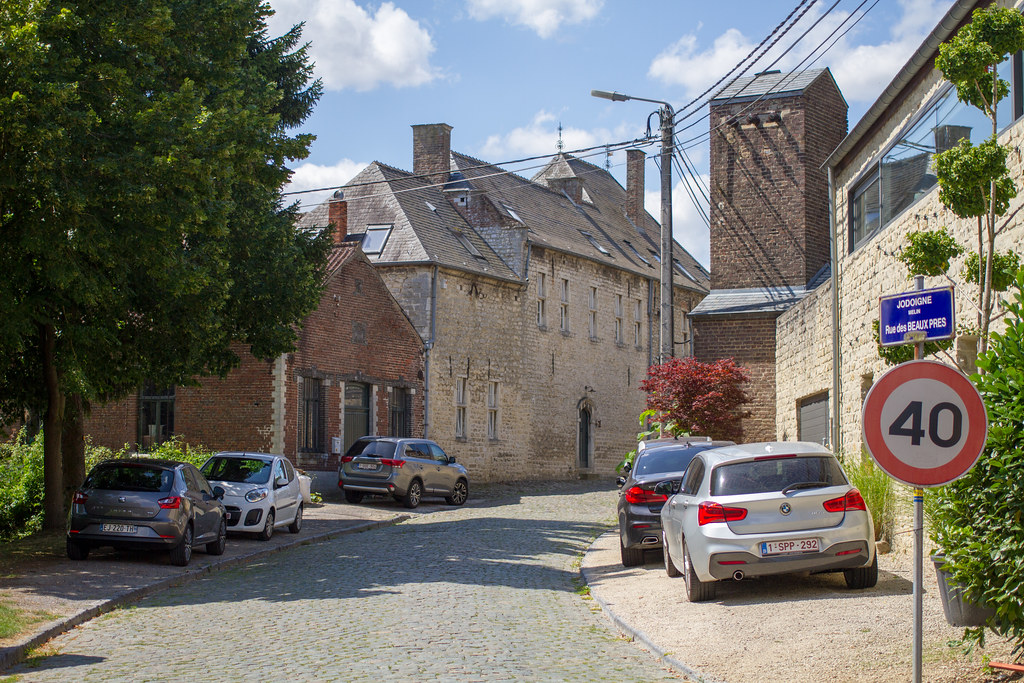
The road around where we parked our car was a typical Belgian pavé (cobblestone road). The reason I say « typical Belgian » is because I thought the stones were rather large and rounded at the corners compared to France. For more detailed information about the stones, please refer to the plaque on the church (the photo is shown below). The area is called Gobertange. It seems that this area is the entrance to the Gobertange valley, and the stones are mostly from that valley, and are used in the architecture of the area, helping to add to the character of the scene.
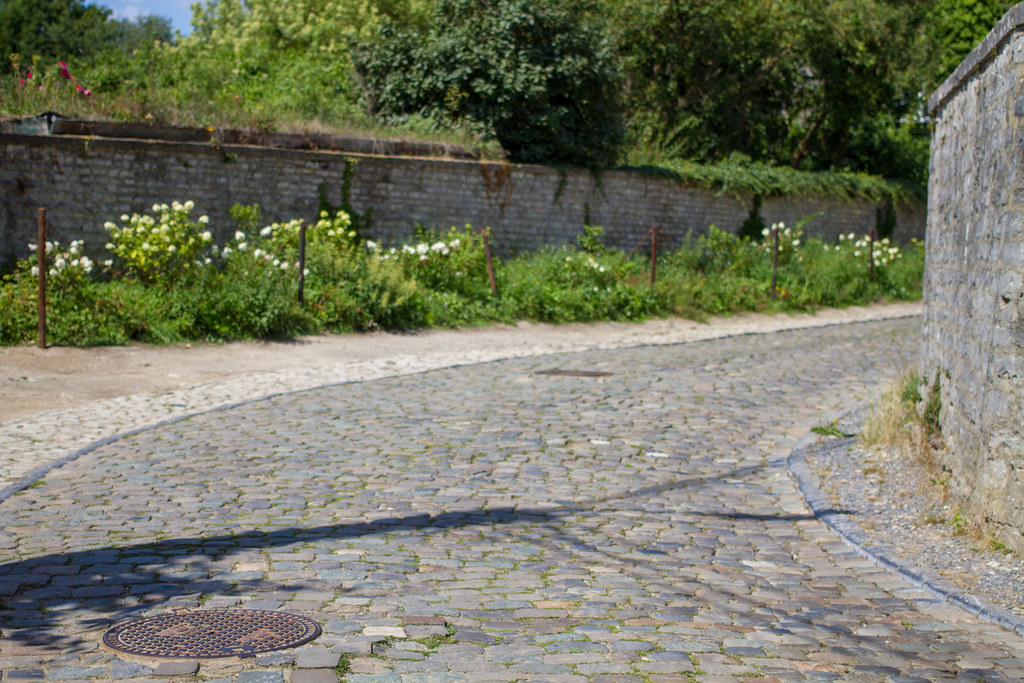
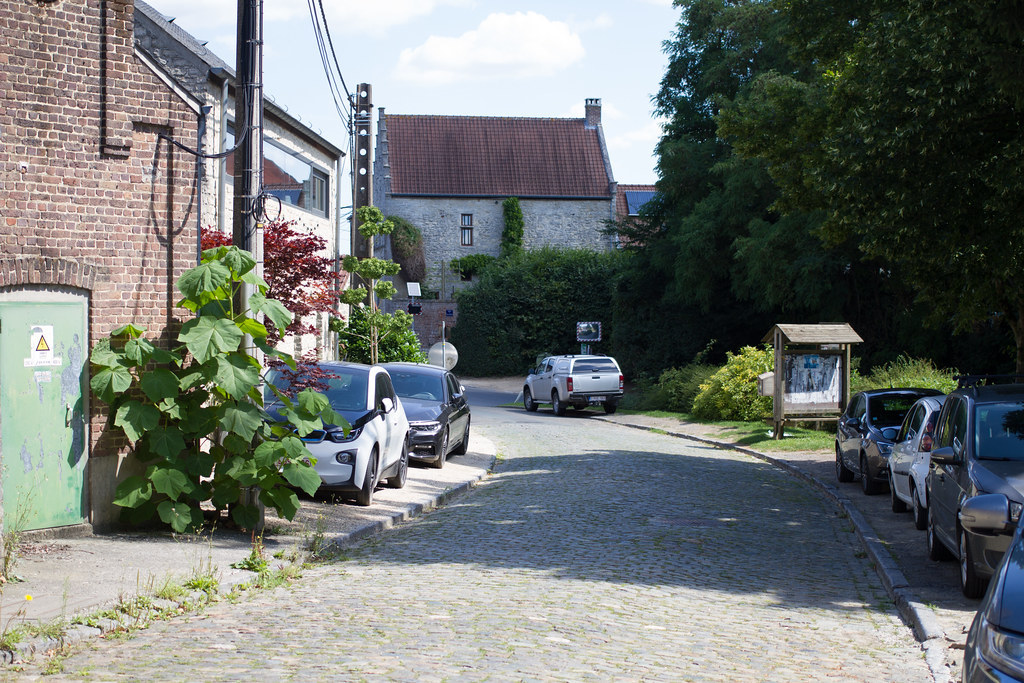
This is the area where the church looks most impressive when you look at the village from a distance (the top photo). This is the road behind the church. It seems to have a good atmosphere, but the electric poles and wires are in the way. It looks like Japan…
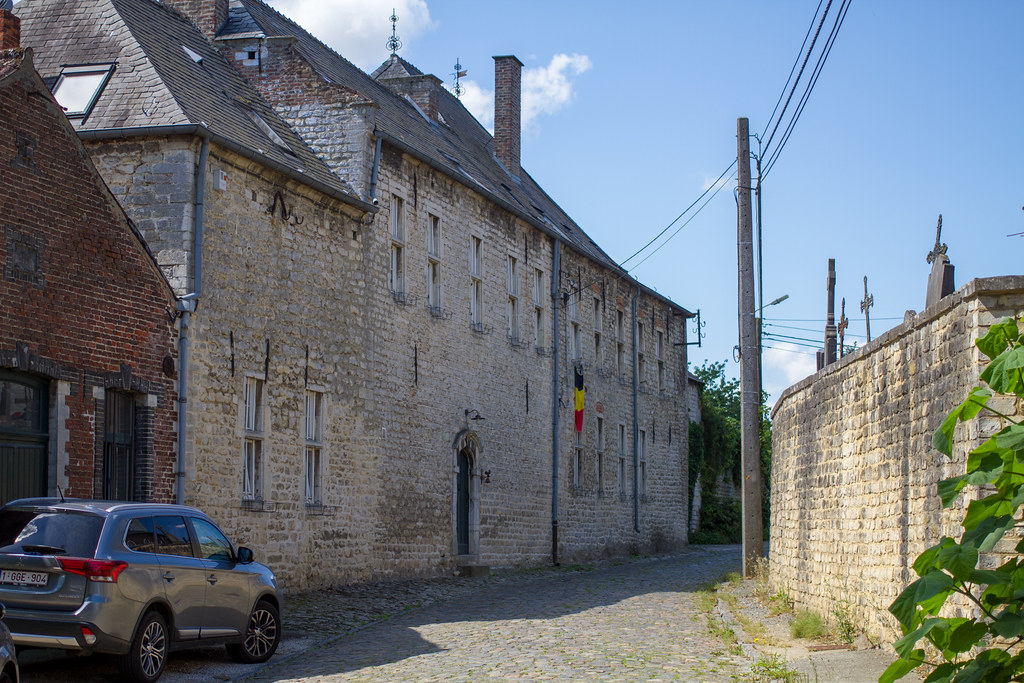
Because of the power lines, it was difficult to take a good picture of the whole church from close up.
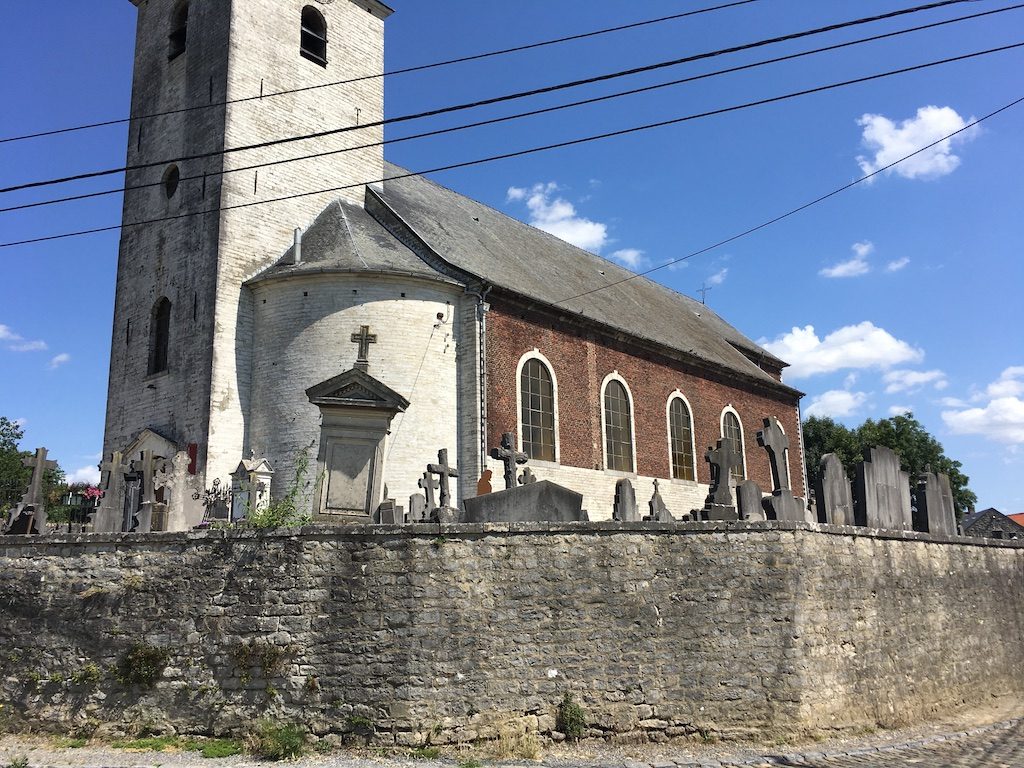
We couldn’t enter the church because of the time of day, but there was a plaque at the entrance, so I’ll give a brief introduction of the church based on it.
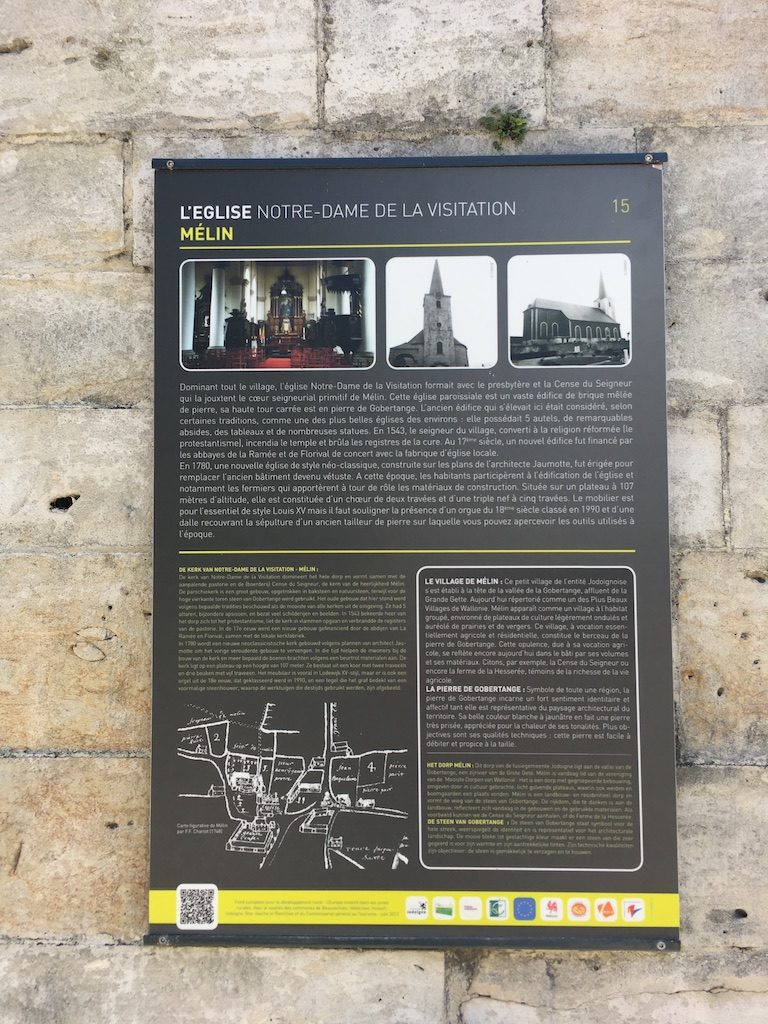
The name of the church is « L’Église Notre-Dame de la visitation ». It’s hard to express in Japanese, so I’ll write it in the local language (French). I don’t know how long it’s been there, but the church seems to have been in this village before the 16th century. However, in the 16th century, it was destroyed by fire in 1543 in the conflict of the Reformation. After that, it was rebuilt as a neo-classical church in 1780.
Except for the area where this church is located, the atmosphere was that of a normal residential area, but there were some old stone and brick buildings, and I think it was quaint enough.
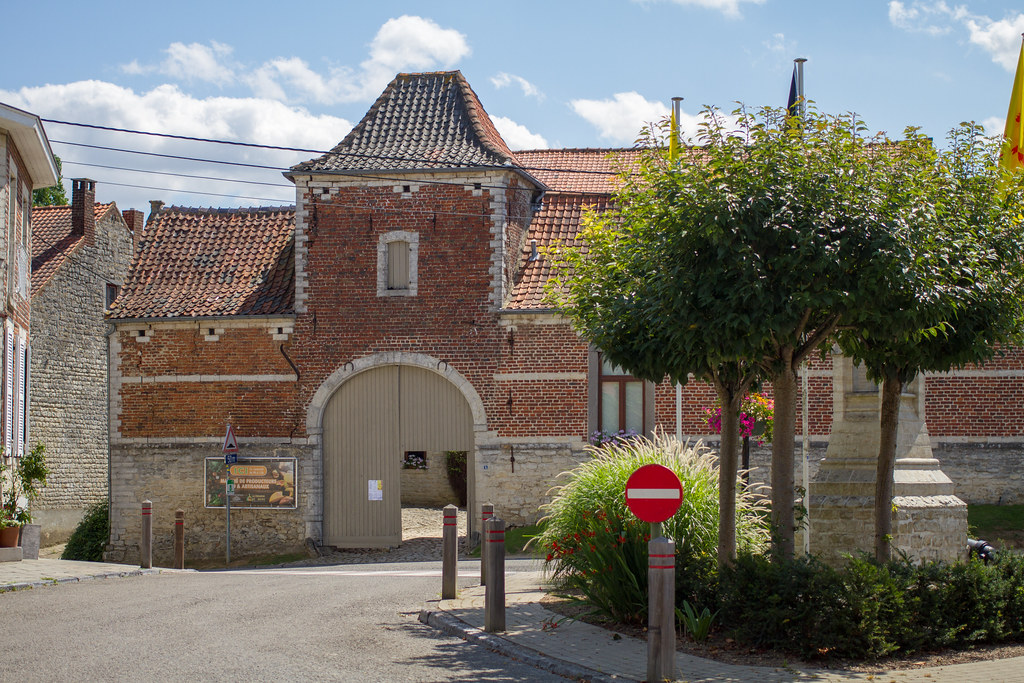
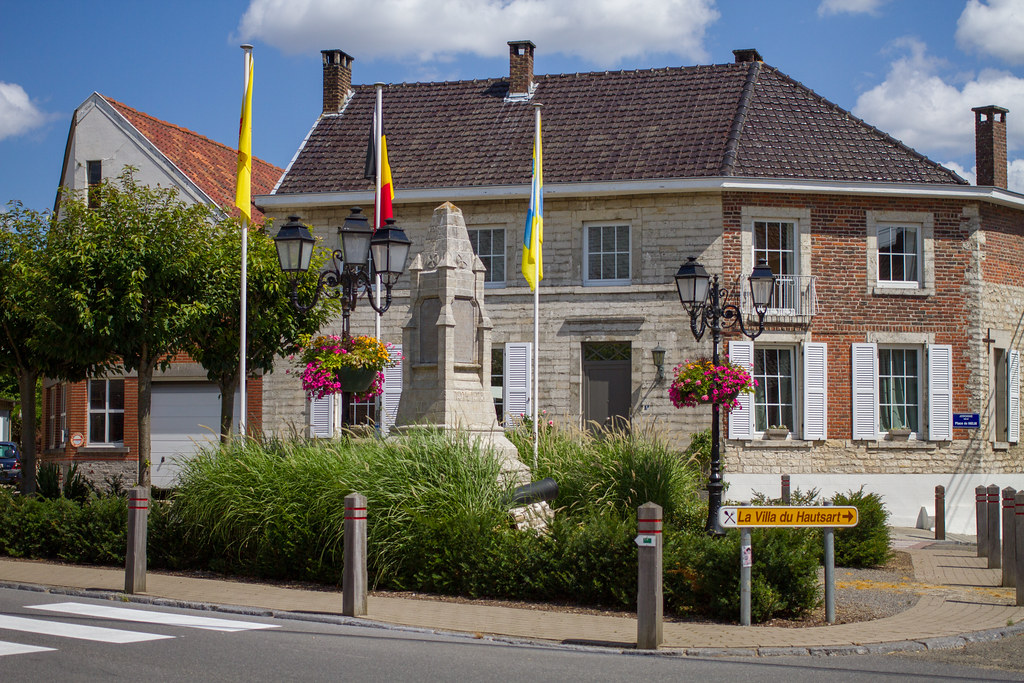
By the way, there was a memorial to the children who were killed in the First World War, which is not an exaggeration to say that there is always a memorial in the most beautiful villages in France. It was a sight that strongly reminded me that this is a French cultural area.
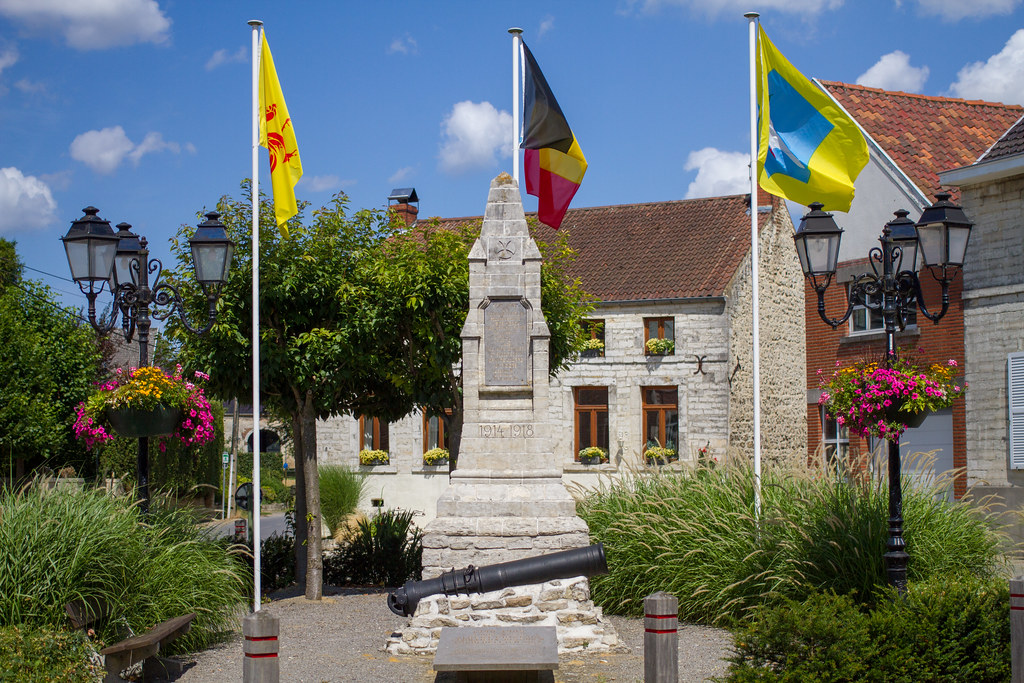
That’s it, we have completely conquered all 30 most beautiful villages of Walloon over 7 days from July 15 to 21, 2017. It has taken us a long time to record this place. But the tour of the most beautiful villages in Europe is still going on. (Tour of the most beautiful villages in Wallonia, complete)
